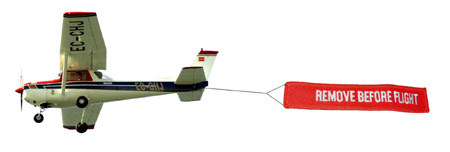
What is the difference between FOD Control and Foreign Material Exclusion?
The short answer: The industry in which you are practicing debris control. The aviation industry refers to its debris control efforts as FOD Control or FOD Prevention, while the nuclear industry refers to the control as Foreign Material Exclusion. Construction workers refer to these programs by the name of Dropped Objects Prevention or Falling Object Protection. There are a few subtle differences in FOD Control, FME and Dropped Objects Protection but the major concepts are the same.
All of these programs, and others that go by similar names, would benefit from finding and exploiting common ground. This article will focus on why the big two (FOD Control and Foreign Material Exclusion) should be combined, but all related programs would experience the same benefits.
Why should FOD Control, FME and other programs be integrated with one another?
FOD Control and FME programs would benefit from attempting to develop a common standard by decreasing costs, streamlining training resources and making it easier for inter-industry lessons to be shared.
First, as with almost anything in business, large economies of scale make for decreased costs. Combining the terminology of FME and FOD would streamline the variety of products needed to carry out FOD/FME operations. For example, FOD Control operations use FOD containers to control debris while FME operations use FME hampers. Both are essentially the same product, but since both groups have different terminology, two different products must be manufactured: one product printed with FOD container, the other with FME Hamper. Retooling and stopped production will ultimately be passed on to the customer as a higher selling price which is an action that works against one of the overall goals of FOD Control – saving money. Subtle differences in terminology and product requirements result in large increases in manufacturing costs.
Resources for training personnel can also be consolidated. Most of the themes associated with FOD Control are almost exactly the same as FME. If a standard terminology could be agreed upon, then both industries could be grouped together in classes for FME/FOD Control training. Part-time seminars can become more thorough full-time classes as each industry exchanges specific lessons learned. The same economies of scale benefits apply to creating training facilities and utilizing staff.
In the age of the internet the small differences in the two programs have already caused some major disadvantages. Each industry has encountered different hurdles and come up with great solutions to foreseeable problems, but because the names of the programs are different there is very little inter-industry sharing of information. So when a new “FOD Focal Point” goes online to research ways to do better at his/her job, he/she will find resources and people associated with FOD Control and Prevention. This is because the search engines, which rely heavily on keywords and terminology, will only bring back results for FOD Control related information. Meanwhile, a veteran “FME Coordinator” or website about FME monitoring goes completely unnoticed, even though many valuable insights could be learned from such a source. The FOD Focal Point is cheated out of valuable information, simply because the naming conventions of the two programs are different. The reverse is also true of the “FME Coordinator” looking for ways to be more efficient at his/her job. If the terminology of the industries was standardized this keyword problem would disappear.
Here’s another quick example of the problems with nonstandard terminology: it’s common to see the use of tinted plastics in most FME programs. Anything that would normally be tough to see or clear is replaced with a tinted or brightly colored alternative. In FOD Control, there is some of this, but the vast availability of tinted and colored products with similar costs to the dull alternatives is not fully known.
Contribute your thoughts on how to unify these different industry standards, or let us know if you think it would be better to leave them separate. Send us a message through our contact form and we’ll make your ideas known.
One way you can help unify these already very similar programs is to link to this article. It will help people find the similarities of FOD Control and Foreign Material Exclusion and will guide the internet search engines to link their results between the programs.
Note: This website uses FME and FOD Control on an interchangeable basis. It is not for us to decide which terminology should be standardized, but we will try to bridge the gap between these industries and many others that may not be learning all they can from one another.


 Use our lanyard selection form and we'll help you get the right lanyards for the job.
Use our lanyard selection form and we'll help you get the right lanyards for the job.